Most folks may mix up a canoe with a kayak like they mix up their morning coffee, but there’s more to these vessels than meets the eye. The key differences lie in their design, paddling techniques, and stability. Canoes boast open tops, ideal for leisurely trips with ample storage, while kayaks zip through the water with closed decks for agility. Whether you fancy a serene paddle or a speedy adventure, understanding the benefits of each craft is crucial. So grab your paddle jacket, life jacket, and sense of adventure, as we investigate the delightful world of canoe versus kayak.
What’s the Difference Between a Canoe and Kayak?
While both canoes and kayaks are waterborne vessels used for paddling, there are distinct differences between the two. Canoes have an open-top design with the rower sitting or kneeling and using a single-bladed paddle, while kayaks have a closed deck and the rower sits inside with their legs stretched out using a double-bladed paddle. Canoes are typically wider, offering more storage space, while kayaks are narrower and faster due to their lightweight design.
Design
Canoe: A canoe has an open deck, making it less protected from the elements than a kayak. Canoes are usually wider, providing more storage options but are slower in the water compared to kayaks.
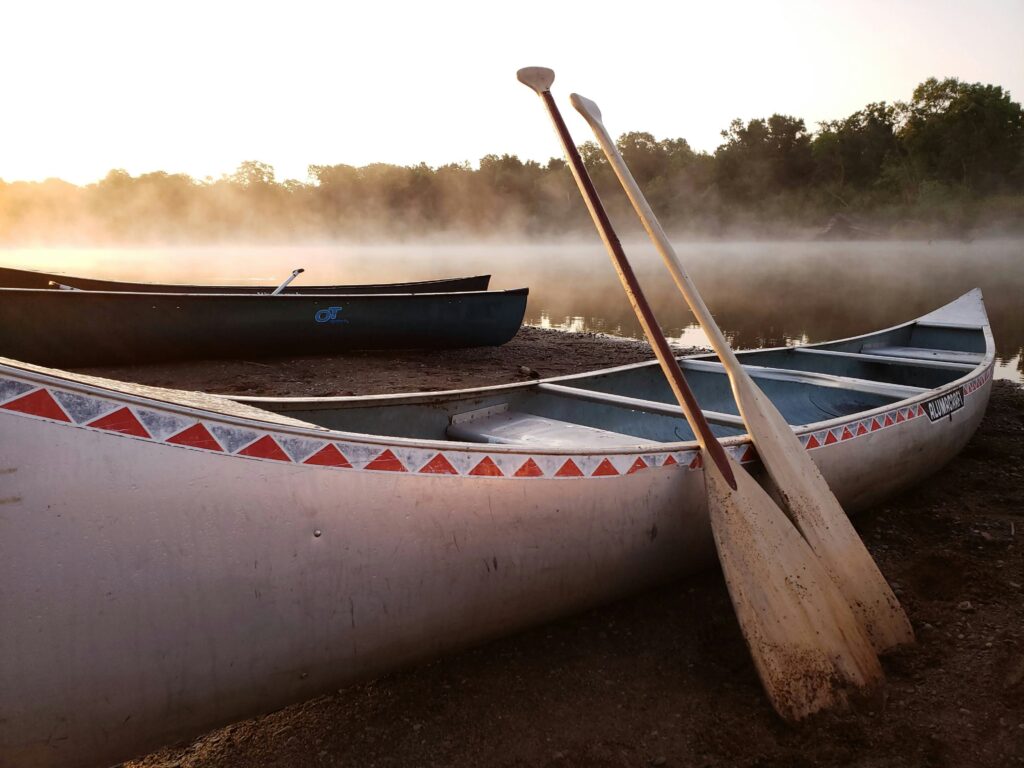
Paddling Techniques
Understanding the differences in paddling techniques between canoes and kayaks is crucial. Canoeists use single-bladed paddles, while kayakers use double-bladed paddles. The paddling style in a canoe involves long, slow strokes, while kayakers utilize a double blade for quicker movement through the water and more agile maneuvers.
Canoe vs Kayak for Stability
Stability: Kayaks are more nimble and speedy, while canoes are more stable and less likely to capsize. The shape and design of each vessel influence their stability and maneuverability on the water.
Storage and Transport
It can be easier to transport and store a kayak due to its smaller size and lighter weight, compared to a canoe which is larger and heavier. Kayaks may require a spray deck to prevent water from entering the boat, adding to the equipment needed for transportation.
Benefits
Benefits of Kayak
One of the key benefits of kayaking is its nimbleness and speed, allowing for quick and agile piloting through various water bodies. With a closed deck design, kayaks offer a faster and more responsive experience on the water, making them ideal for those looking for speed and maneuverability.
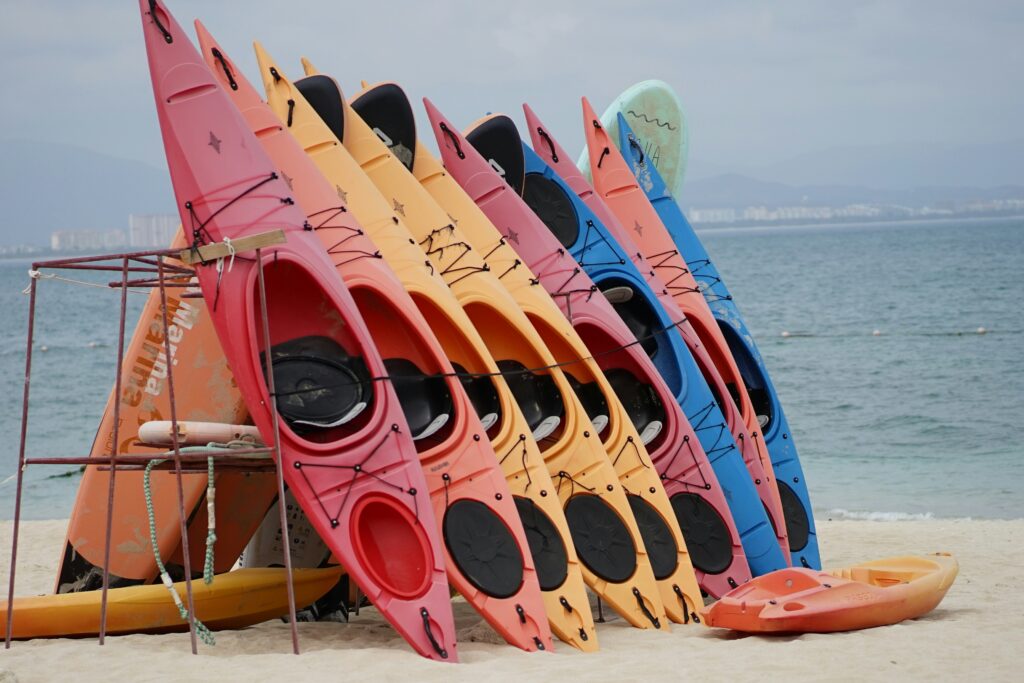
Benefits of Canoe
On the flip side, canoes are known for their stability and spaciousness, making them a comfortable choice for longer expeditions. With an open-top design and high sides, canoes offer a more stable ride and are harder to capsize, providing a sense of security for paddlers.
Benefits: While kayaks offer speed and agility, canoes provide stability and comfort on the water. Kayaking can be more challenging due to the need for balance and core strength, but it offers a thrilling and fast-paced experience. Canoeing, on the other hand, is more relaxed and suitable for beginners, with a focus on leisurely paddling and exploration.
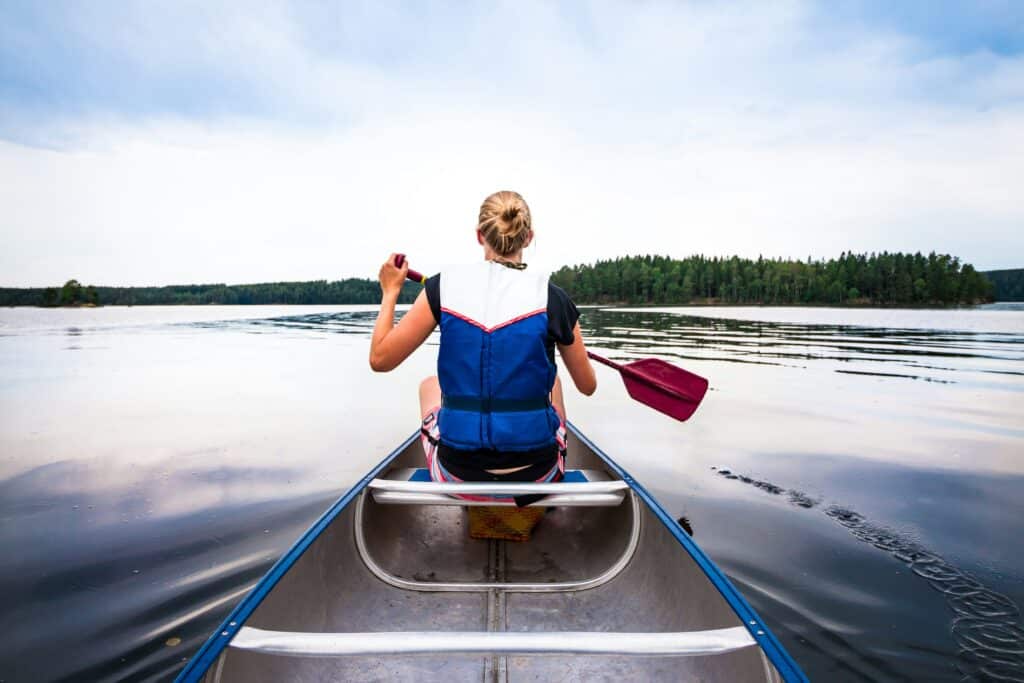
What Gear Do you Need for Canoes and Kayaks?
Essential Equipment
Not sure what gear you need for your canoeing or kayaking adventure? Any paddling excursion requires a few key crucials to ensure your safety and comfort on the water. Essential equipment includes a canoe or kayak, a paddle, a life jacket, and a waterproof case for your camera or phone.
Optional Accessories
Accessories such as a drybag for storing gear and a sleeveless longjohn neoprene wetsuit can enhance your experience on the water. These optional accessories provide added convenience and protection, keeping your belongings safe and dry while you navigate the aquatic terrain.
Essential Safety Considerations
Safety Considerations
Any outdoor water activity comes with its safety considerations. It’s crucial to prioritize safety equipment such as a life jacket and paddle jacket with reflective strips to ensure visibility on the water. Additionally, always be aware of weather conditions and water currents to prevent accidents or mishaps during your paddling excursion.
Need a guide to keep your paddling adventure safe and enjoyable. Bear in mind, safety first!
Is it Easier to Kayak or Canoe?
Once again, the eternal question arises: is it easier to kayak or canoe? Let’s explore the differences in learning curves, physical demands, and tips for mastering both waterborne vessels. Whether you choose to kayak or canoe, remember that both offer unique experiences and challenges for the intrepid explorer.
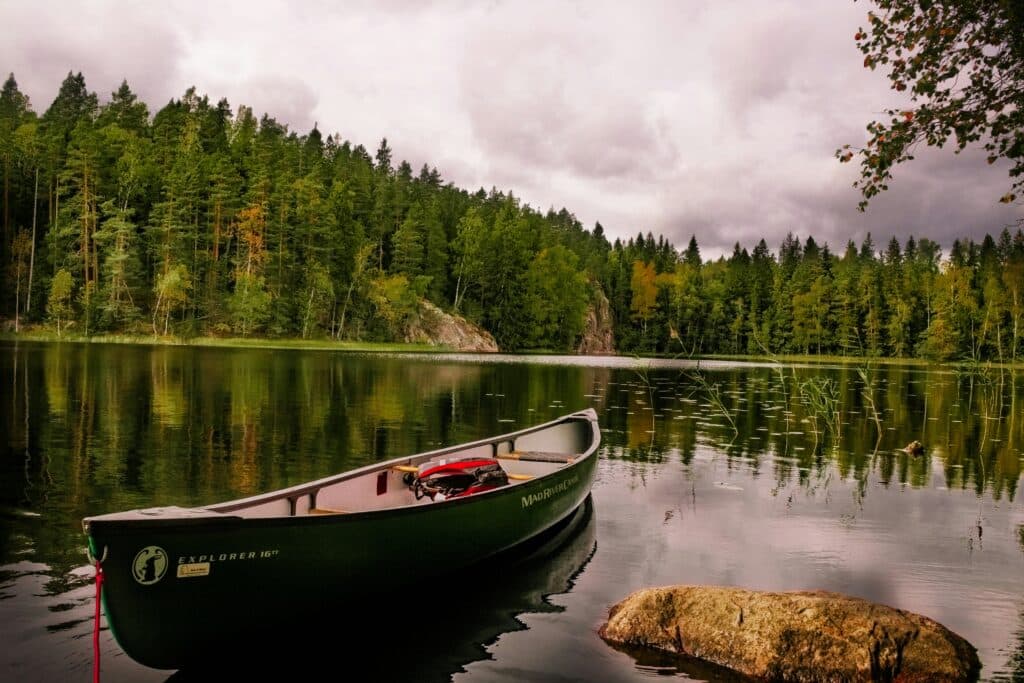
Learning Curve Comparison
Comparison
| Kayak | Canoe |
| Easier to capsize | Less likely to capsize |
| Requires more balance | Offers more stability |
Physical Demands of Each
Kayak
Learning to kayak requires strong core muscles and balance due to the likelihood of capsizing. The double-bladed paddle and closed-top design demand coordination and agility to navigate swiftly through the water.
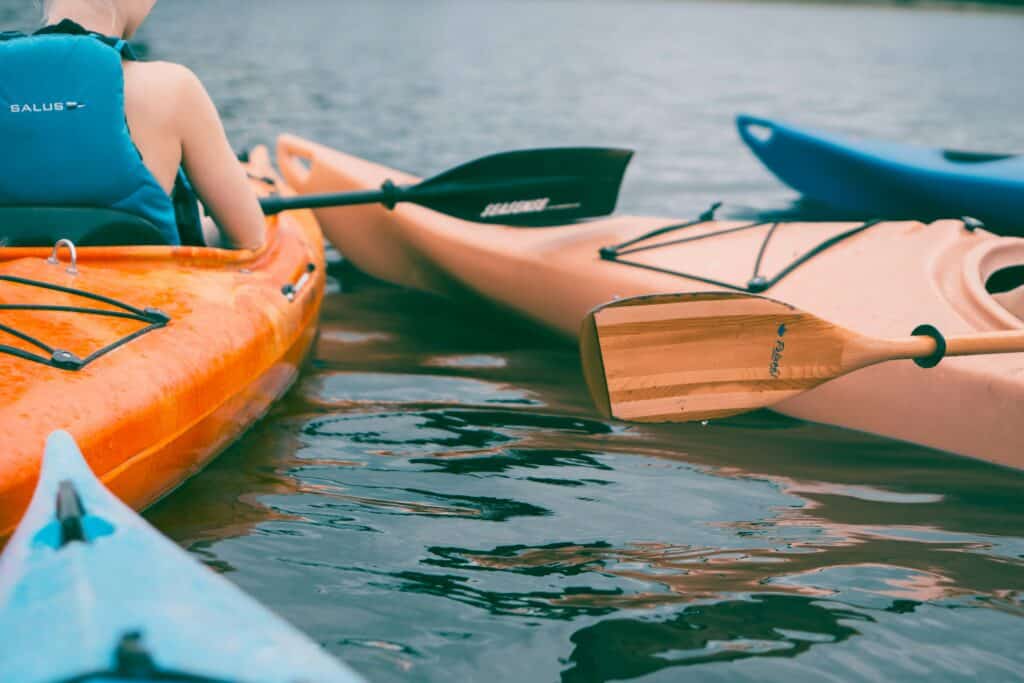
Tips for Mastering Both
Learning the ropes of kayaking and canoeing can be a rewarding experience. To help you master both watercraft, consider the following tips:
- Practice your balance to prevent capsizing
- Master different paddling techniques to enhance maneuverability
- Take guided tours to learn from experienced paddlers
After mastering the basics, you’ll feel more confident and capable to tackle the waters with ease.
Canoe vs Kayak for Beginners
Choosing the Right Craft
Choosing the right craft is important for beginners in canoeing and kayaking. Canoes are more stable and spacious, ideal for comfort and slow turns, while kayaks are quicker and more agile. Consider your preferences and the type of water you’ll be paddling in before making a decision.
Basic Techniques for Newbies
Any beginner in canoeing or kayaking should focus on mastering basic techniques. This includes learning how to paddle correctly, maintain balance, and navigate smoothly. Taking a lesson with a guide who can teach these fundamentals is highly recommended.
Beginners should practice their paddling techniques in calm waters before attempting more challenging conditions. It’s important to maintain proper form, use the correct strokes, and pay attention to safety guidelines.
Common Mistakes to Avoid
Newbies often make common mistakes when starting out in canoeing and kayaking. Some of these include not wearing a life jacket, improper paddling techniques, and underestimating the water conditions. It’s crucial to prioritize safety, follow proper instructions, and be aware of your surroundings at all times.
Mistakes such as leaning too far to one side, paddling too hard, or not being prepared for weather changes can lead to accidents or discomfort on the water. By being aware of these common pitfalls and practicing good habits, beginners can enjoy a safe and rewarding paddling experience.
A Quick History of Canoes and Kayaks
Ancient Origins
For centuries, canoes and kayaks have been integral to human waterborne endeavors. The Pesse canoe, dating back to 8200 BC, is the oldest known boat, highlighting the ancient origins of these vessels. The indigenous people of America are renowned for their canoes, while Inuit tribes in Alaska, Canada, and Greenland were pioneers of the kayak.
Evolution Over Time
Origins of canoes and kayaks can be traced back to ancient times, but their evolution over the years has been remarkable. From the indigenous designs to modern materials like rotomolded polyethylene and fibreglass, these watercraft have come a long way in terms of design, efficiency, and versatility.
Modern-Day Innovations
An array of modern-day innovations has transformed canoes and kayaks, making them more durable, lightweight, and efficient. Materials like rotomolded polyethylene and fibreglass have revolutionized the industry, providing paddlers with reliable and high-performing vessels for their aquatic adventures.
Where to Go Canoeing and Kayaking
Freshwater Destinations
One of the joys of canoeing and kayaking is the ability to explore freshwater destinations. Rivers, lakes, and calm streams offer serene settings for paddling adventures. Whether it’s the historical significance of the oldest canoe in the world dating back to 8200 BC or the exploration opportunities offered by indigenous American canoes, freshwater destinations have a rich history waiting to be discovered.
Saltwater Expeditions
Where freshwater destinations provide history, saltwater expeditions offer a whole new level of adventure. From the challenging waves of the ocean to the calm waters of coastal bays, kayaking and canoeing in saltwater environments can provide a thrilling experience. Inuit tribes in Alaska, Canada, and Greenland traditionally used kayaks for hunting, showcasing the versatility of these vessels in various saltwater conditions.
Freshwater destinations offer a peaceful escape for paddlers looking to connect with nature. The gentle flow of a river or the stillness of a lake can provide a serene environment for paddling enthusiasts. Explore historical waterways or venture into untouched landscapes for a truly immersive experience.
Urban Waterways
The urban jungle also offers opportunities for canoeing and kayaking enthusiasts. From bustling city canals to serene park ponds, urban waterways provide a unique perspective on city life. Paddling through city centers can offer a peaceful escape from the hustle and bustle of everyday life, allowing for a moment of tranquility amidst the chaos.
Canoe vs Kayak: Choosing the Right One for You
Assessing Your Needs
Now, when considering whether to choose a Canoe or a kayak, it’s important to assess your needs. Are you looking for a vessel that offers more stability and storage space, or do you prioritize speed and agility on the water?
Considering Your Skill Level
Choosing the right vessel also depends on your skill level. If you’re new to paddling, a canoe may provide a more comfortable and stable experience. However, if you’re confident in your abilities and seek a faster, more responsive craft, a kayak could be the way to go.
Budget-Friendly Options
Level up your paddling game with budget-friendly options. Consider inflatable canoes and kayaks, which offer affordability and convenience for beginners or those on a tight budget. These options can provide a cost-effective way to explore the waters without breaking the bank.
Fitness Benefits of Canoeing and Kayaking
Cardiovascular Advantages
Advantages: Keep your heart pumping and your blood flowing with the cardiovascular benefits of canoeing and kayaking. Paddling through the water provides a full-body workout that improves your cardiovascular fitness levels, helping to strengthen your heart and improve overall endurance.
Strength Training Opportunities
For a unique strength training experience, look no further than canoeing and kayaking. The resistance provided by the water as you paddle works various muscle groups, including your arms, shoulders, back, and core. This results in increased muscle strength and improved overall muscle tone.
Benefits: Incorporating paddling into your fitness routine can help build upper body strength and improve core stability. Regular sessions on the water can lead to increased muscle endurance and overall physical strength, making canoeing and kayaking excellent options for those looking to tone and sculpt their bodies.
Flexibility and Balance Improvements
Kayaking: Another major benefit of kayaking and canoeing is the improvement of flexibility and balance. Maneuvering a kayak or canoe through the water requires precise movements that engage core muscles and improve balance. This can lead to enhanced flexibility, better coordination, and increased stability.
Environmental Impact of Canoeing and Kayaking
Eco-Friendly Practices
Impact: Many enthusiasts of canoeing and kayaking are nature lovers, and therefore, they tend to be environmentally conscious. Choosing to paddle in clean waters, respecting wildlife habitats, and adhering to local regulations can contribute to the preservation of the natural environment.
Minimizing Waste and Pollution
Minimizing: With proper planning and preparation, paddlers can minimize waste by avoiding single-use plastics, carrying out any trash brought in, and disposing of waste properly at designated areas. Preventing pollution in water bodies ensures a healthier ecosystem for aquatic life.
With the rise of eco-tourism, more paddle sports enthusiasts are adopting sustainable practices to reduce their environmental footprint. Choosing biodegradable soap, using reef-safe sunscreen, and avoiding disturbing wildlife are all steps towards protecting the environment and wildlife habitats.
Responsible Wildlife Interaction
Responsible: For responsible wildlife interaction, paddlers should maintain a safe distance from animals, avoid feeding them, and refrain from disrupting their natural behavior. By respecting wildlife boundaries, paddlers can enjoy observing animals in their natural habitat without causing harm or disturbance.
Environmental stewardship is crucial for preserving the natural beauty of water bodies and the surrounding ecosystems. By embracing sustainable practices, paddlers can contribute to the conservation of our planet’s precious resources and ensure a harmonious coexistence with wildlife.
Safety Precautions for Canoeing and Kayaking
Hazard Awareness
One important aspect of canoeing and kayaking is being aware of potential hazards. All paddlers should understand the risks associated with water activities, such as strong currents, sudden weather changes, and underwater obstacles. By being vigilant and knowledgeable about these dangers, paddlers can navigate their way safely through various water bodies.
Emergency Procedures
Awareness of emergency procedures is crucial for all paddlers. In case of capsizing or the need for immediate assistance, knowing how to react swiftly can make a significant difference. One important emergency procedure in kayaking is learning the ‘eskimo roll’ technique, which allows paddlers to recover from a capsized position without leaving the kayak. Additionally, understanding how to signal for help and safely exit the watercraft are vital skills for all paddlers.
Kayaking: In kayaking, emergency procedures are paramount for ensuring the safety of paddlers. In the event of an emergency, it’s crucial to remain calm and focused on following the necessary protocols to navigate through the situation effectively. Understanding how to perform self-rescue techniques and seeking assistance from fellow paddlers or authorities when needed are important aspects of emergency procedures in kayaking.
Weather Conditions to Watch
Procedures should always be in place to monitor and respond to changing weather conditions while canoeing or kayaking. One key aspect is staying informed about upcoming weather forecasts before heading out on the water. Being aware of potential storms, wind patterns, and temperature changes can help paddlers make informed decisions and ensure their safety during their water adventures.
Emergency: During canoeing and kayaking trips, it’s crucial to pay close attention to any sudden changes in weather conditions, such as unexpected storms or strong winds. These conditions can pose significant risks to paddlers and may require immediate action to ensure safety. In such situations, paddlers should prioritize finding shelter, adjusting their routes, or seeking assistance, taking all necessary precautions to prevent accidents and stay safe on the water.
Canoe and Kayak Maintenance 101
Cleaning and Storage
Storage: Despite their sturdy design, canoes and kayaks require proper maintenance to ensure longevity. After each use, it is crucial to rinse your vessel with fresh water to remove any salt or debris. Store them in a cool, dry place away from direct sunlight to prevent damage.
Repairing Damages
Storage: Canoe or Kayak repairs may become necessary over time due to wear and tear. Small cracks or holes can be patched up using specialized repair kits. However, significant damages may require professional assistance to ensure the vessel’s structural integrity.
Regular Inspections
To: Regularly inspecting your canoe or kayak can help identify any potential issues before they escalate. Look for signs of wear, loose fittings, or cracks. Addressing these problems promptly will prevent further damage and prolong the lifespan of your vessel.
Cleaning: In addition to repairs, routine inspections can also help maintain the performance of your canoe or kayak. Pay attention to the hull, deck, and fittings to ensure everything is in working order. A well-maintained vessel will provide a safer and more enjoyable paddling experience.

Joining a Canoe or Kayak Community
Local Clubs and Organizations
Not sure where to start when looking to join a canoe or kayak community? Any local clubs and organizations dedicated to paddling can be a great first step. These groups often offer beginner-friendly outings, training sessions, and equipment rentals, making it easy for newcomers to get involved in the water sports scene.
Online Forums and Resources
The world of canoeing and kayaking extends beyond the waters, with online forums and resources providing a wealth of information for enthusiasts of all levels. Connecting with fellow paddlers, accessing gear reviews, and finding tips for improving your skills are just a few benefits of tapping into these online communities.
A key advantage of online forums is the ability to seek advice and recommendations from experienced paddlers, ensuring that you stay safe and well-informed while exploring the waterways. Whether you’re a newbie or a seasoned pro, these digital platforms offer a virtual hub for sharing knowledge and connecting with like-minded individuals.
Attending Workshops and Events
Resources for hands-on learning and networking with other paddlers can be found in workshops and events hosted by local clubs, instructors, and outdoor retailers. Forums dedicated to canoeing and kayaking often list upcoming workshops where you can hone your skills, learn new techniques, and build camaraderie with fellow adventurers out on the water.
Now that you’re armed with the knowledge of the key differences between canoes and kayaks, as well as their respective benefits and advantages, it’s time to choose the right vessel for your next waterborne adventure. Whether you prefer the stability and comfort of a canoe or the speed and nimbleness of a kayak, both offer a unique and enjoyable experience on the water. So, grab your paddle, rev up your sense of adventure, and get ready to explore the world from a whole new perspective – whether you choose to canoe or kayak, the journey is bound to be memorable.
FAQ
Q: What is the main difference between a canoe and a kayak?
A: The main difference lies in their design and paddling techniques. Canoes have an open-top design with a single-bladed paddle, while kayaks have a closed deck design and use a double-bladed paddle for propulsion.
Q: What are the benefits of choosing a canoe over a kayak?
A: Canoes offer more stability, spaciousness, and storage options compared to kayaks. They are ideal for leisurely expeditions where speed is not a priority. Additionally, canoes are easier to navigate for beginners due to their stable nature.
Q: How do I choose between a kayak and a canoe for my waterborne adventures?
A: When choosing between a kayak and a canoe, consider factors such as your preferred paddling style, speed requirements, storage needs, and the type of water you’ll be navigating. If you seek agility and speed, opt for a kayak. If stability and comfort are more your style, go for a canoe.

